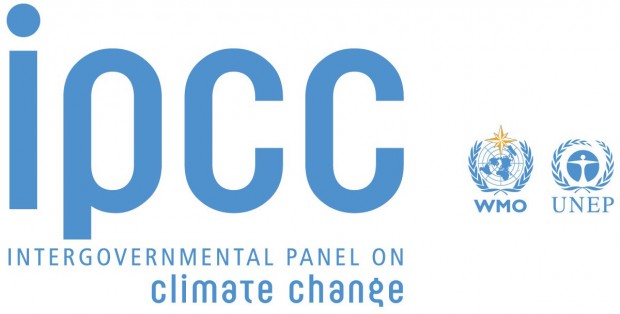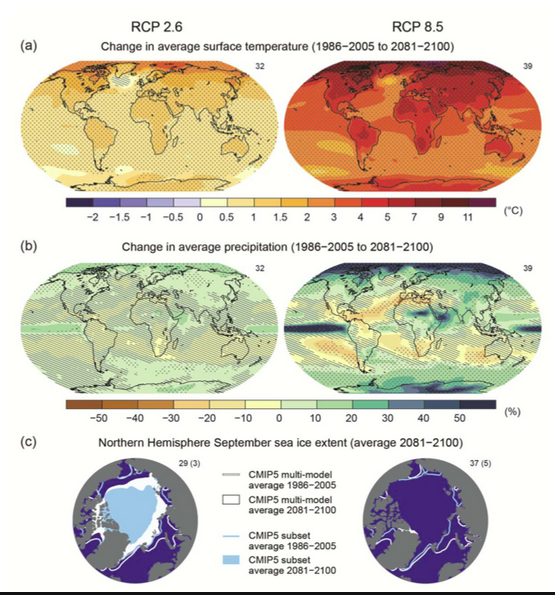IPCC Report AR5 September 2013
On September 27th 2013 the IPCC released the WG1 report […]

On September 27th 2013 the IPCC released the WG1 report of the IPCC AR5 assessment.
UN Secretary General Ban-Ki Moon addressed the IPCC at Stockholm on 27 September. He stated that “the heat is on. We must act”. US Secretary of State John Kerry responded to the report saying “This is yet another wakeup call: those who deny the science or choose excuses over action are playing with fire.”
Ocean warming dominates the increase in energy stored in the climate system, accounting for more than 90% of the energy accumulated between 1971 and 2010 (high confidence). It is virtually certain that the upper ocean (0−700 m) warmed from 1971 to 2010 (see Figure SPM.3), and it likely warmed between the 1870s and 1971. IPCC AR5 Summary for policymakers. PDF
IPCC WGI AR5
Climate Change 2013: The Physical Science Basis
The Twelfth Session of Working Group I (WGI-12) was held from 23 to 26 September 2013 in Stockholm, Sweden. At the Session, the Summary for Policymakers (SPM) of the Working Group I contribution to the IPCC Fifth Assessment Report (WGI AR5) was approved and the underlying scientific and technical assessment accepted. http://www.climatechange2013.org
The new IPCC climate report
The time has come: the new IPCC report is here! After several years of work by over 800 scientists from around the world, and after days of extensive discussion at the IPCC plenary meeting in Stockholm, the Summary for Policymakers was formally adopted at 5 o’clock this morning. Congratulations to all the colleagues who were there and worked night shifts. The full text of the report will be available online beginning of next week. Realclimate summarizes the key findings and shows the most interesting graphs.
The new IPCC report gives no reason for complacency – even if politically motivated “climate skeptics” have tried to give this impression ahead of its release with frantic PR activities. Many wrong things have been written which now collapse in the light of the actual report.
The opposite is true. Many developments are now considered to be more urgent than in the fourth IPCC report, released in 2007. That the IPCC often needs to correct itself “upward” is an illustration of the fact that it tends to produce very cautious and conservative statements, due to its consensus structure – the IPCC statements form a kind of lowest common denominator on which many researchers can agree. The New York Times has given some examples for the IPCC “bending over backward to be scientifically conservative”. Despite or perhaps even because of this conservatism, IPCC reports are extremely valuable – as long as one is aware of it.
http://www.realclimate.org/index.php/archives/2013/09/the-new-ipcc-climate-report

Summary
A concise overview of Working Group I’s findings was published as the Summary for Policymakers on 27 September 2013. The level of confidence in each finding was rated on a confidence scale, qualitatively from very low to very high and, where possible, quantitatively from exceptionally unlikely to virtually certain (determined based on statistical analysis and expert judgement). The principal findings were:
- Warming of the atmosphere and ocean system, and associated impacts such as sea level change have certainly occurred since 1950. Many of these metrics have changed at rates unprecedented in the historical record.
- It is likely that 1983—2013 was the warmest 30-year period for 1400 years.
- It is virtually certain the upper ocean warmed from 1971 to 2010.
- It is with high confidence that Ocean warming accounts for 90% of the energy accumulation between 1971 and 2010.
- It can be said with high confidence that the Greenland and Antarctic ice sheets have been losing mass in the last two decades.
- Mean 1901—2010 sea level rise was stated as 19 ± 2 cm.
- Concentration of greenhouse gases in the atmosphere have increased to levels unprecedented on earth in 800,000 years. The rate of increase over the 20th century is the greatest known for 22,000 years (very high confidence).
- Total radiative forcing of the earth system, relative to 1750, is positive and the most significant driver is the increase in CO2‘s atmospheric concentration.
- It is extremely likely human influence has been the dominant cause of observed warming since 1950, the level of confidence having increased since the fourth report.
- Continued emissions will lead to further warming and changes in the climate system.
The summary also detailed the range of forecasts for warming, and climate impacts with different emission scenarios. Compared to the previous report the lower bounds for the sensitivity of the climate system to emissions were slightly lowered, though the projections for global mean temperature rise (compared to pre-industrial levels) by 2100 in all scenarios exceeded 1.5 °C. https://en.wikipedia.org/wiki/IPCC_Fifth_Assessment_Report
